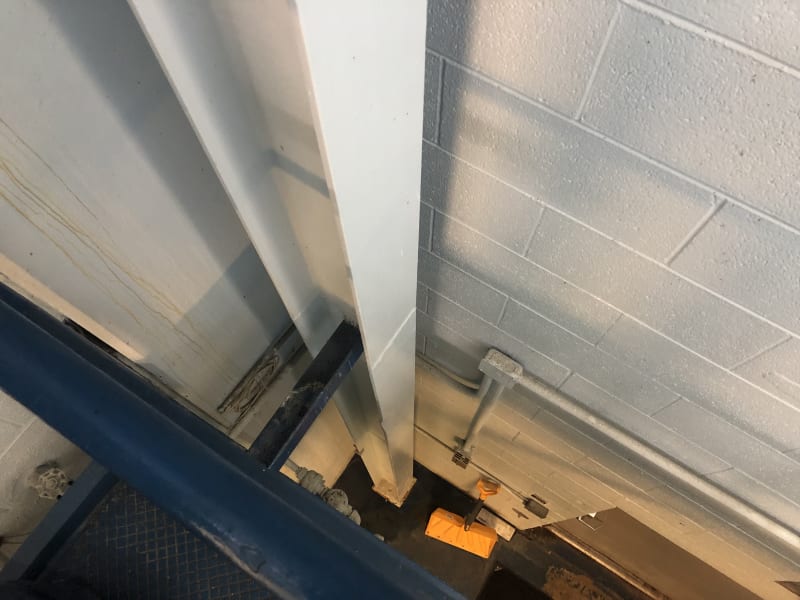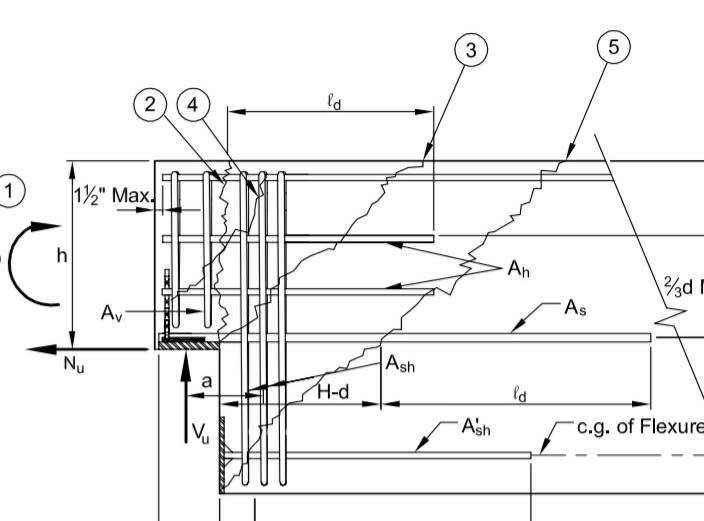A client of ours has a 2-story manufacturing facility that is primarily precast concrete construction. We noticed an unusual cracking pattern in one of their precast beams that is exposed in a stairwell. Analysis of the beam and design of a fix are out of scope at this time, but we want to do our best to understand what is happening before asking for a change order. Therefore, I'd like to see if anyone else has seen this type of cracking and to provide any thoughts concerning what may be occurring.
The attached photos show the precast beam at its bearing on a precast column. There is also a steel column that appears to have been added at some point adjacent to the precast column. We are unsure why the column was added, but it doesn't pass the eye test for being appropriately sized if it was intended to support the beam. It also appears to have experienced local flange buckling near mid-height.
The diagonal cracking appears to run the opposite direction you would expect from a shear failure which makes me think that the presence of the steel column is causing the beam bearing connection to experience tension. In thinking about a fix, I'm leaning towards just removing the column, since it seems to be doing more harm that good, and doing whatever is needed to repair the precast beam. However I'm hesitant to take something out when I don't fully understand its purpose.
Does anyone have any thoughts?
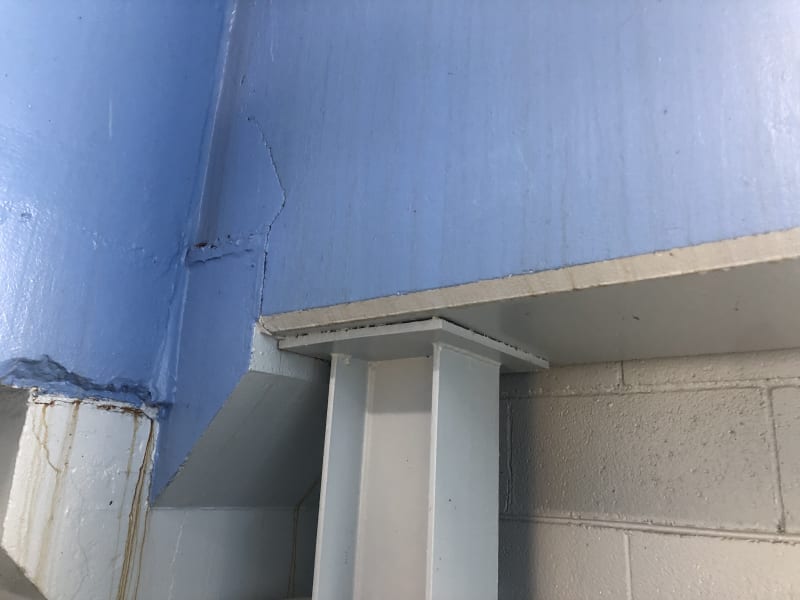
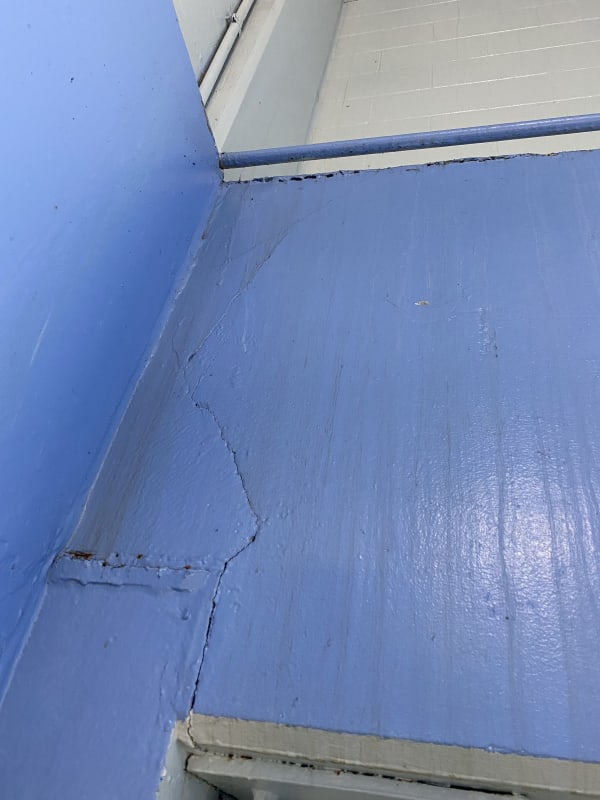
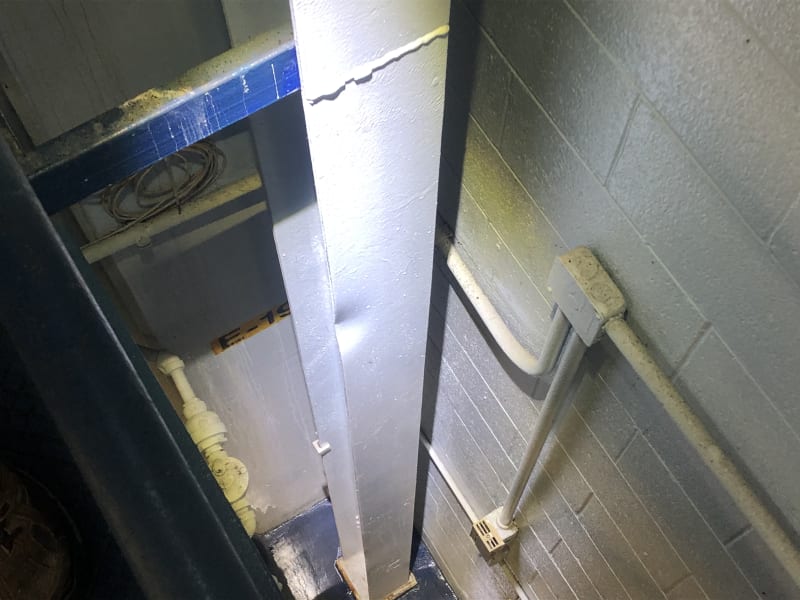
The attached photos show the precast beam at its bearing on a precast column. There is also a steel column that appears to have been added at some point adjacent to the precast column. We are unsure why the column was added, but it doesn't pass the eye test for being appropriately sized if it was intended to support the beam. It also appears to have experienced local flange buckling near mid-height.
The diagonal cracking appears to run the opposite direction you would expect from a shear failure which makes me think that the presence of the steel column is causing the beam bearing connection to experience tension. In thinking about a fix, I'm leaning towards just removing the column, since it seems to be doing more harm that good, and doing whatever is needed to repair the precast beam. However I'm hesitant to take something out when I don't fully understand its purpose.
Does anyone have any thoughts?




